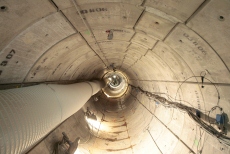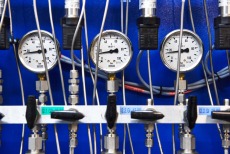Research activities of EIG EURIDICE
 |
 |
 |
| Excavation and construction | Instrumentation and monitoring | Research on clay behaviour |
-
demonstrate the technical feasibility of building an underground disposal infrastructure in poorly indurated clay, comprising access shafts, main gallery and disposal galleries
- study the excavation-damaged zone in the clay around the galleries and its potential impact on the performance of the disposal system
- study the thermal impact of heat-emitting high-level waste on the behaviour of the clay
These activities have enabled EURIDICE to acquire expertise in excavation and construction techniques and in the thermo-hydro-mechanical behaviour of clay. Various types of measuring instruments placed in the clay are used to monitor the experiments. EURIDICE’s many years of experience in the field of sensors and monitoring is therefore its third main area of expertise.
Two of SCK CEN‘s expert groups, Waste & Disposal and Radiological Impact & Performance Assessments, also conduct a significant amount of geological disposal research on behalf of ONDRAF/NIRAS, partly in above-ground laboratories and partly in the HADES facility. As manager of the underground laboratory, EURIDICE manages all of the experiments conducted in HADES and offers support in developing and setting them up.
Experimental research is complemented by computer simulations of how the different parts of the disposal system will evolve over time. Modelling is primarily a way of improving our understanding of the processes that can occur in this system. The behaviour of the system’s constituent components can also be gauged and assessed, in both the short and the long term. Experiments are run over a long period of time (sometimes more than 25 years), which makes it possible to confirm and fine-tune the models developed, by comparing them with the measurement results obtained under the realistic conditions created in the underground laboratory.
